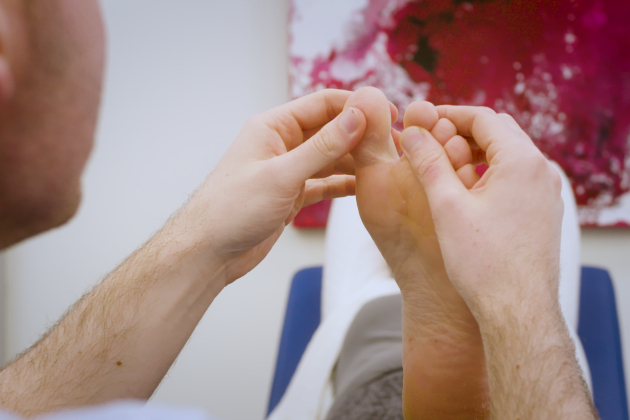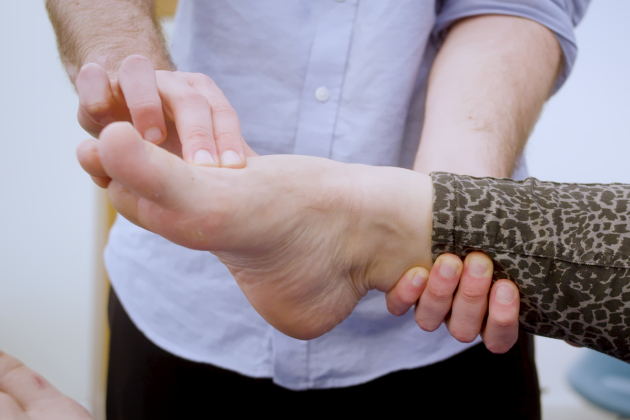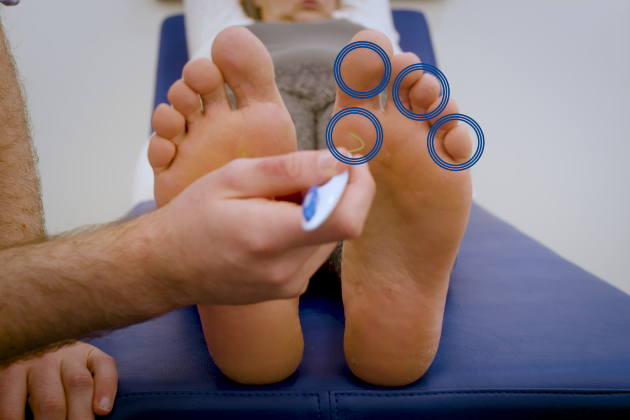Diabetes is on the rise in the UK, but equally concerning is the number of people with diabetes facing amputations. Diabetes leads to 156 amputations a week, 1 every hour, and research shows that 85% of these amputations are preventable.
One way all members of the nursing team can support people with diabetes is by providing regular and thorough foot care examinations, to catch any issues early on.
Whether you need a refresher or you’re currently training, here’s how to carry out a full foot examination using the “ask, look and feel” approach.
Why are foot checks important?
Exposure to high blood sugar levels over a long period can cause peripheral neuropathy. This can lead to a loss of sensation in the feet and reduce blood flow, which slows healing and can eventually cause ulceration.
“Nursing staff are in prime position to provide education and help patients manage their complications,” says Callum Metcalfe-O'Shea, RCN Professional Lead for Long-Term Conditions.
Ensure your patients are aware of the complications associated with poor foot health and diabetes, and what they can do to prevent these.
“Make every contact with a patient who has diabetes count. If a patient who is living with diabetes presents for a blood test or a blood pressure check, these are great opportunities to discuss foot care,” urges Callum.
How to carry out a foot care examination
Any appropriately trained nursing staff member can provide this thorough examination, using the “ask, look and feel” approach.
Stage 1: Ask
Start the examination by sitting down with your patient and asking them about any current or previous concerns.
- How often do you check your feet? It’s recommended patients examine their feet daily. This can be completed after getting out of the shower, putting socks on, etc.
- Have you ever had a foot problem? This might be a previous ulceration or open wounds. Also investigate whether they experience a tingling sensation, which could indicate neuropathy.
- Have you noticed any changes? Particularly to the colour, shape and temperature of the feet, or any new pain or discomfort. Also ask if they experience any cramping in the calf muscle, or occasionally the thigh or buttock, after walking a certain distance.
- Any blisters, cuts, cracks, or nail problems? This will help you identify any problem areas in the next stage of the foot check.
- Do you visit a podiatrist regularly? Review the date of their last check and their previous results.
Stage 2: Look
When you take a closer look at your patient’s feet, pay particular attention to these areas.
- Skin colour/hair growth: Worsening redness can indicate an infection, and blue discolouration may indicate circulatory issues. A lack of hair growth can signal poor circulation.
- Swelling/inflammation: This can be a sign of an infection or other causes such as gout.
- Broken skin, including wounds or fissures: These increase the risk of infection and can lead to ulceration and in some cases gangrene.
- Bruising, signs of rubbing: Friction from shoes or other items can cause this. If this worsens, it could lead to skin breakdown and possible ulceration.

- Pressure points: If you can see redness or the patient feels tenderness over a joint, this can indicate pressure caused by friction or incorrect footwear which increases the risk of ulcerations.
- Blisters: If these develop and burst, they can lead to ulceration.
- Deformity: If toes are clawed or misshaped, this increases the risk of friction or pressure which could cause skin breakdown.
- Hard skin and calluses: These can hide unknown wounds or ulcers. Debridement (removal of dead, damaged or infected tissue) may be needed to assess these thoroughly.
- Fungal infections: Particularly look for thickening of the nails with yellow discolouration.
If at any stage you notice concerns, escalate to a senior member of staff or contact the relevant department for further advice or investigation.
Stage 3: Feel
Where possible, this final stage of the foot examination should take place in a quiet and relaxed setting.
1) Find the pulse
Using 2 fingers, you’ll need to palpate the marked areas on the foot – the posterior tibial and the dorsalis pedis. This requires experience and practice, and it can take time to feel them.

If the foot is warm and well perfused and you can palpate either pulse on each foot, this indicates good blood flow.
If the pulses are not palpable, consider referring on to a specialist for further investigation or escalate to a senior member of staff, especially if the patient is symptomatic or has any wounds.
2) Test the sensation in the feet
To test the sensation, you’ll need to use a 10g monofilament. This pen device applies a certain amount of pressure to specific pressure points on the toes and feet.
Best practice is to ask your patient to lay flat for this part of the examination. But if your patient has mobility issues, they can sit in a reclining chair and have their feet raised slightly.
Ask your patient to close their eyes, so they can focus on the part of the foot you’re testing with the monofilament.
There are 4 testing sites on the feet. The number of sites you’ll need to test will vary according to your local guidelines. These are:
- sole of the great toe
- sole of the middle toe
- sole of the little toe
- sole of the first metatarsal head.

Apply the monofilament perpendicular to the surface of the skin, until it buckles. Be careful not to apply pressure where a callus or ulceration is present.
Can your patient feel the pressure? Record their response, ensuring a “yes” or “no” is documented for each site tested. If the patient doesn’t feel the filament at any of the sites, this may indicate significant sensory loss.
Next steps
Once you have completed the check, you’ll need to record the risk categories of the feet, these are usually “low”, “medium”, or “high” risk. These categories determine how frequently further foot examinations are needed.
High-risk patients need to be checked every 1-2 months and those at moderate risk need to be seen every 3-6 months.
Most patients are low risk and will undergo a full foot care examination annually in England, Wales and Northern Ireland via their diabetes service or general practice. In Scotland these checks are offered bi-annually.

Touch the toe test
Between these annual checks, you or your patient can complete the "touch the toe" test – checking the sensation across 6 toes. “This quick and convenient method can be used in any setting and it’s a great way to detect any changes to the feet early on,” says Callum.
Further information
- Read our article on diabetes – sharing the essentials that all non-specialist nursing staff need to know.
- Explore the RCN clinical guide to diabetes complications here.
- Diabetes UK offers free leaflets and downloads on foot care essentials to help in your conversations with patients. This helpful resource explores 10 simple steps patients can take to prevent foot problems.








